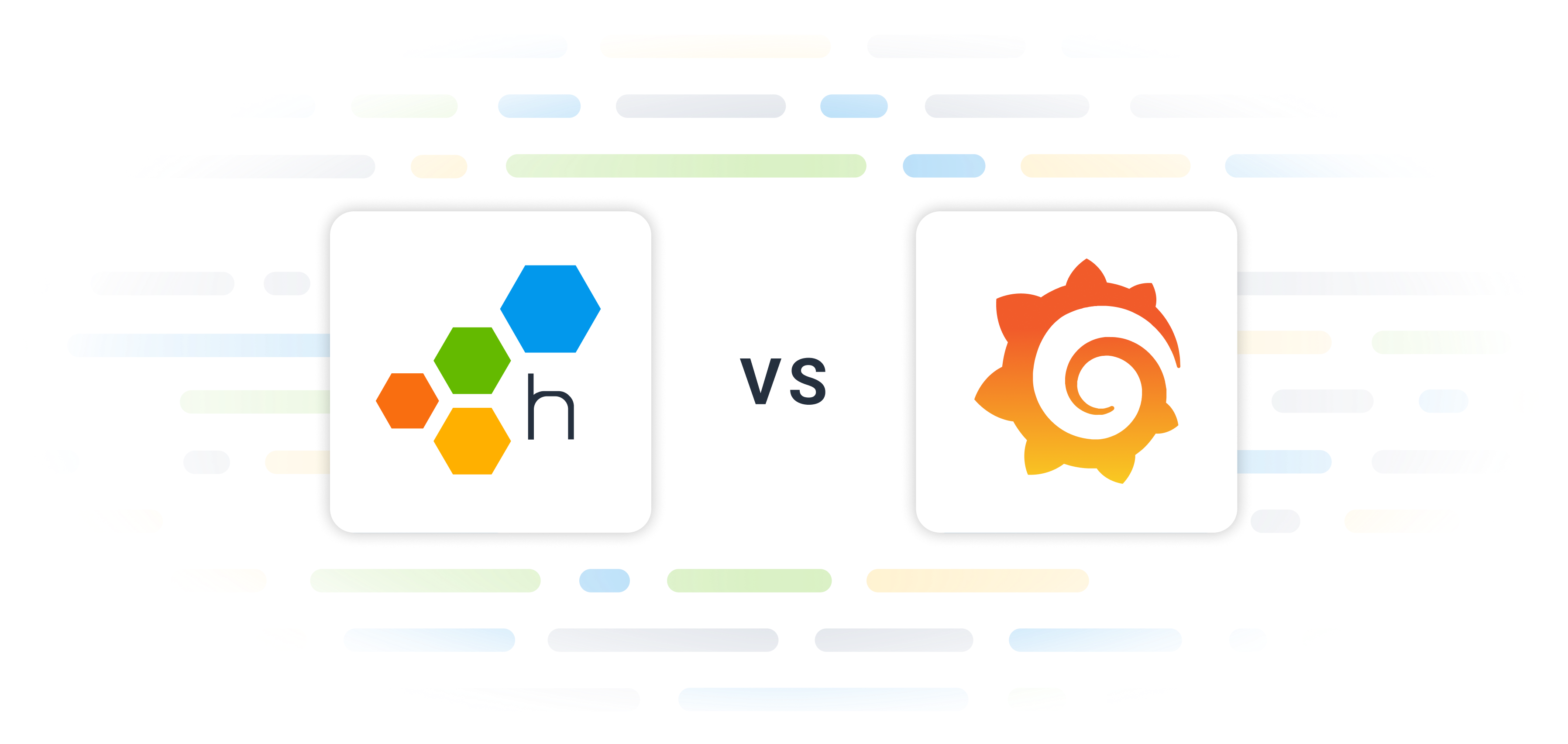
Honeycomb is an observability solution with a modern approach that’s fundamentally different from other platforms. It’s built to help teams find and solve unexpected problems within their ever-evolving cloud applications without running into roadblocks and production slowdowns.
With Honeycomb’s observability approach, users can speed up debugging dramatically, escape escalating costs, and avoid the cost/visibility tradeoff in observability tooling by removing the need for disparate tools and data sources. Honeycomb is the only tool you need.
With Honeycomb, companies can experience profound cost savings:
$1.9M
increased revenue due to higher uptime and performance
$940,000
cost savings from avoided employee churn
$422,000
decrease in legacy solution dependence and tool sprawl
$2M
cost savings from faster incident response
Grafana is a multi-platform open source analytics and interactive visualization web application. It can produce charts, graphs, and alerts for the web when connected to supported data sources.
Compare our capabilities


| Capability | Honeycomb | Grafana |
|---|---|---|
|
Transcends three pillars approach for one single source of truth |
||
|
Instant, unrestricted analysis and parsing of highly specific values |
||
|
Faster debugging with context to filter by at every view |
||
|
Real-time querying and pattern detection on production code |
||
|
Actionable alerts with accurate service level objectives (SLOs) |
||
|
Full compatibility with OpenTelemetry |
||
|
Pricing scales with complexity to prepare for any unknowns |
||
|
Designed for engineering efficiency and collaboration across your team |
||
|
Real user monitoring with full-stack analysis |
||
|
AI-powered query execution from natural language prompts |
||
|
Debug using logs with line and attribute analysis |
||
|
Unified telemetry pipeline for traces, logs, and metrics |
||
|
Last updated: 01/14/2025 |
||
Dive deeper into the differences
Transcends three pillars approach for one single source of truth
Grafana’s logs, metrics, traces, network, and real user monitoring signals are all stored separately and correlated record by record. Statistical analysis is siloed by data type.
Honeycomb’s wide events make it possible to rely on a singular debugging solution, consolidating multiple use cases into one workflow. Honeycomb stitches together events to illuminate what happened within the flow of system interactions. And unlike metrics, which provide indirect signals about user experience, Honeycomb reconstructs how your users are actually interacting with your system, surfacing relevant events by comparing across all fields. While complexity breaks metrics analysis workflows, Honeycomb never skips a beat when you analyze high-cardinality data within your system.
Instant, unrestricted analysis and parsing of highly specific values
In Grafana, some tools have granular event analysis, but all metric dashboard and SLO views are pre-aggregated and cannot be parsed by granular high-cardinality fields.
Honeycomb lets you instantly filter by high-cardinality data (userID, hostID) from every view, such as trace waterfalls and metric counts.
Faster debugging with context to filter on every graph view
Honeycomb’s rich context analysis makes debugging faster from any starting point. Dramatically speed up investigations by automatically detecting hidden outliers with BubbleUp. Highlight anomalies on any heatmap visualization or query result, and BubbleUp will surface which events have the highest degree of difference across thousands of high-cardinality and high-dimensionality events. Because BubbleUp is an easy-to-grasp visualization tool, any team member can quickly identify outliers for further investigation.
Grafana does not make it easy to find hidden attributes behind any issue or anomalous trend in any data. To retrieve important context, your team has to cycle between separate data sources and context stored in separate formats—a time-consuming task that can slow down debugging and requires zooming in and out multiple times.
Real-time querying and pattern detection on production code
With Honeycomb, you can query across all fields instantly from production without pre-indexing and find patterns in every granular attribute or datapoint.
With Grafana, complex querying is siloed to Parquet and PromQL experts and restricted within each pillar of telemetry. Automatic pattern detection is based on aggregated metrics that miss the nuances in events. Instant analysis is only performant if pre-selected for dedicated column storage.
Actionable alerts with accurate service level objectives (SLOs)
Honeycomb provides event-based SLOs, enabling higher-fidelity alerts that give teams insight into the underlying “why.” When errors begin, Honeycomb SLOs can ping your engineers in an escalating series of alerts. Unlike other vendors, Honeycomb SLOs reveal the underlying event data so anyone can quickly see how to improve performance against a particular objective.
With Grafana, SLO counts are aggregated from streamed events or metrics, and do not retain full context.
Designed for engineering efficiency and collaboration across your team
With Honeycomb, all users enjoy full analysis, usage, team history, and AI assistance features with one workflow to learn and adopt for all signal sources.
With Grafana, instances, resourcing, and user environments can get very fragmented. It’s hard to investigate in collaboration or follow the breadcrumbs of your teammates.
Real user monitoring with full stack analysis
Grafana and Honeycomb both offer RUM dashboards and capabilities.
Going beyond RUM capabilities, Honeycomb for Frontend Observability gives engineers the unified, granular data they need to quickly pinpoint issues across their stack and understand user impact. Click through the standard RUM views to the event attributes and queries behind them.
AI-powered querying capabilities to facilitate engineer adoption
Unlike with other tools, engineers using Honeycomb don’t need to be experts in a specific query language to ask intelligent questions about their systems—Query Assistant enables them to ask in plain English. An engineer can, for example, ask for slow endpoints by status code and Honeycomb will run a relevant query and return results to help start the investigation.
Grafana offers AI assistance but does not execute queries with access to its features and visuals from a language prompt.

